Bucharest: A Journey Through Time
Join us for a captivating free walking tour that unveils Bucharest's rich history, stunning architecture, and vibrant culture. Explore hidden gems and iconic landmarks!
Time
3 Hours
Stops
9 Places
Distance
4.7 km
Palace of the Parliament
Begin your tour at the iconic Palace of the Parliament, the second-largest administrative building in the world and a symbol of Bucharest's complex history.
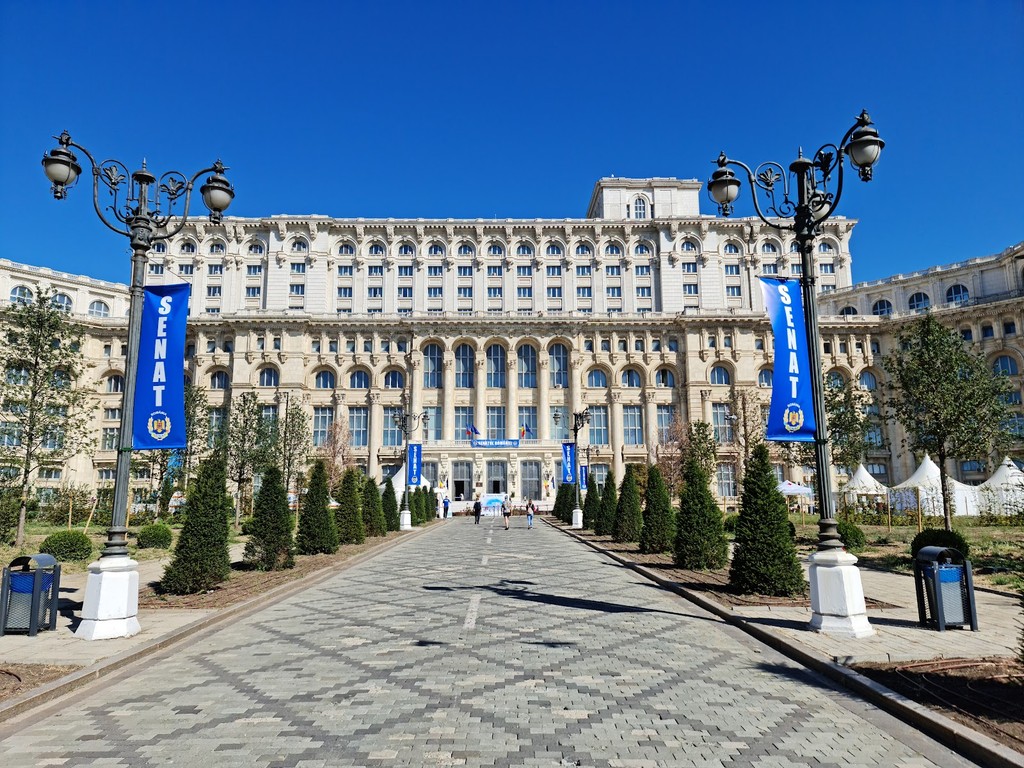
Palace of the Parliament (Source: Google Maps)
The Palace of the Parliament, also known as the People's House, is a monumental building in Bucharest and the second-largest administrative building in the world. Constructed during the regime of Nicolae Ceaușescu, its construction began in 1984 and was part of a grand vision that involved extensive urban planning and architectural endeavors. The building is a prime example of socialist realism and neoclassical architecture, showcasing opulent interiors with lavish decorations, marble columns, and intricate woodwork. It houses the Romanian Parliament and several museums, drawing tourists and locals alike who are curious about its controversial history and immense scale. The Palace is also a symbol of the excesses of the Ceaușescu regime, standing as a reminder of Romania's tumultuous past.
Kretzulescu Church
Explore the Kretzulescu Church, a beautiful example of Romanian Orthodox architecture dating back to the early 18th century.
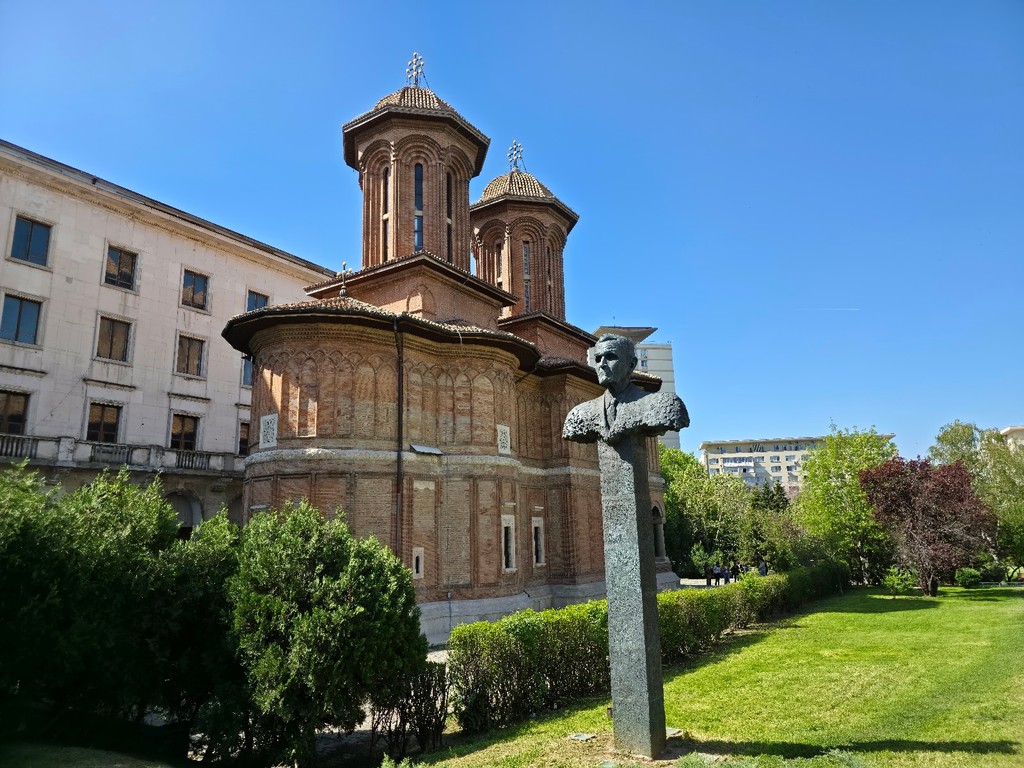
Kretzulescu Church (Source: Google Maps)
Kretzulescu Church is a remarkable example of Romanian Orthodox architecture, built in the early 18th century. Located in the heart of Bucharest, this church stands out for its Brâncovenesc style, characterized by a blend of Byzantine and Baroque influences. The church was constructed by the wealthy Kretzulescu family and features a striking façade adorned with intricate stone carvings and frescoes, which depict various religious scenes. Inside, visitors are greeted by beautifully painted interiors and an impressive iconostasis, showcasing the artistry of Romanian craftsmen. The church has served as a spiritual center for the local community for centuries and continues to be a place of worship and cultural significance, attracting visitors who appreciate its rich history and architectural beauty.
National Museum of Art of Romania
Discover Romanian and European art at the National Museum of Art, housed in the former Royal Palace and offering a rich cultural experience.
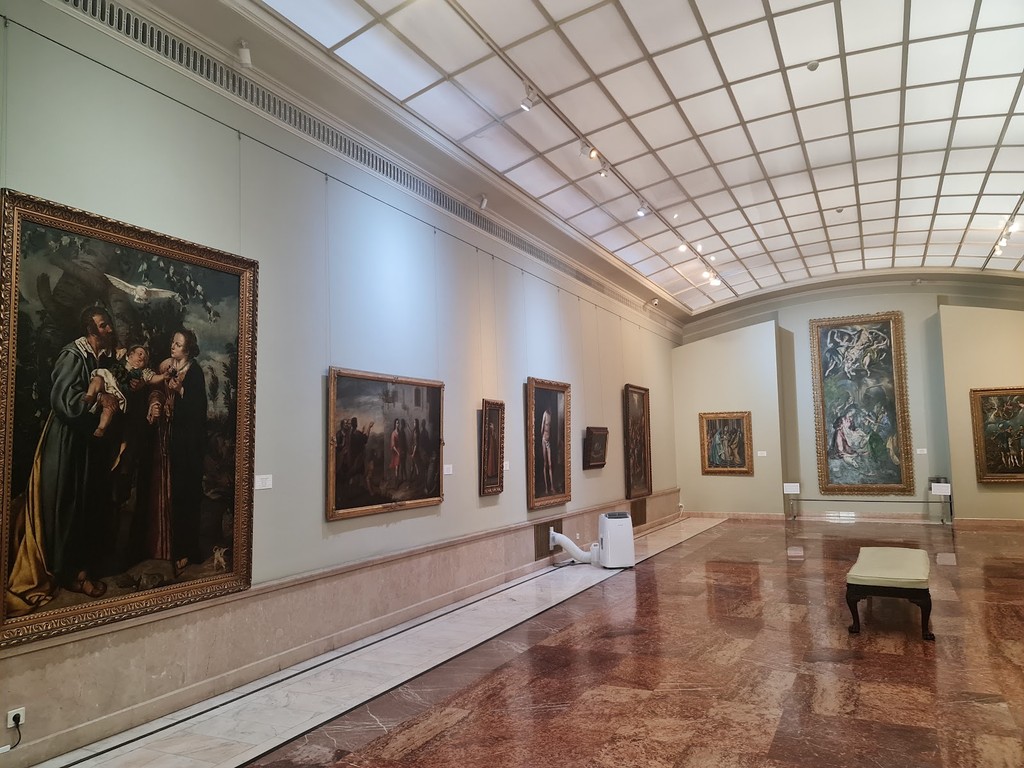
National Museum of Art of Romania (Source: Google Maps)
Housed in the former Royal Palace, the National Museum of Art of Romania is a treasure trove of Romanian and European art. Established in 1948, the museum boasts an extensive collection that spans centuries, featuring works from medieval times to contemporary art. The museum's Romanian Gallery showcases masterpieces by renowned artists such as Nicolae Grigorescu and Theodor Aman, while the European Gallery includes works by masters like Rembrandt and El Greco. The building itself is an architectural gem, reflecting neoclassical influences, with grand halls and opulent decorations. Visitors can immerse themselves in Romania's cultural heritage and appreciate the artistic evolution through the diverse exhibits. The museum also hosts temporary exhibitions, educational programs, and cultural events, making it a vibrant hub for art lovers.
Calea Victoriei
Stroll along Calea Victoriei, one of Bucharest's oldest and most charming streets, lined with beautiful architecture and historical buildings.
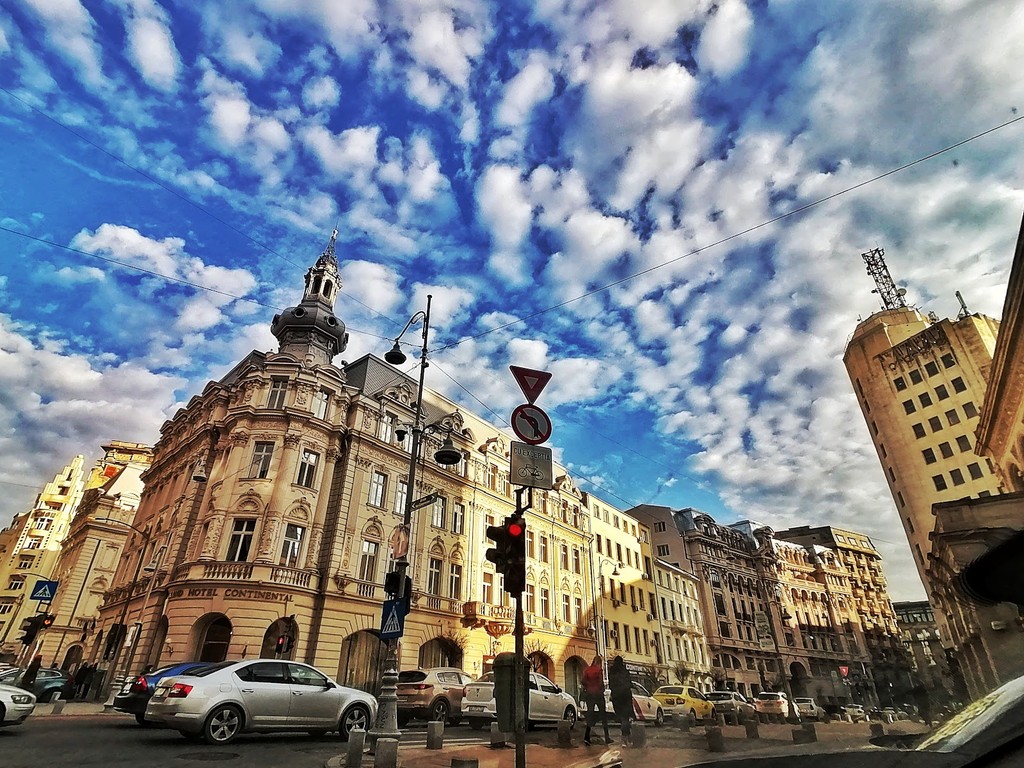
Calea Victoriei (Source: Google Maps)
Calea Victoriei is one of Bucharest's most historic and picturesque streets, dating back to the 17th century. This vibrant thoroughfare is lined with an eclectic mix of architectural styles, from neoclassical to Art Nouveau, reflecting the city’s rich history. It has been a witness to significant events in Romanian history, serving as a venue for royal parades, public celebrations, and protests. Along the street, visitors can find numerous landmarks, including theaters, museums, and upscale shops, making it a lively hub of activity. Calea Victoriei is also known for its charming cafes and restaurants, where locals and tourists alike gather to enjoy the ambiance. As you stroll along this iconic street, you'll be captivated by its blend of history, culture, and modernity, making it a must-visit destination in Bucharest.
Romanian Athenaeum
Admire the stunning architecture of the Romanian Athenaeum, a concert hall that is a symbol of Romanian culture and a must-see for visitors.
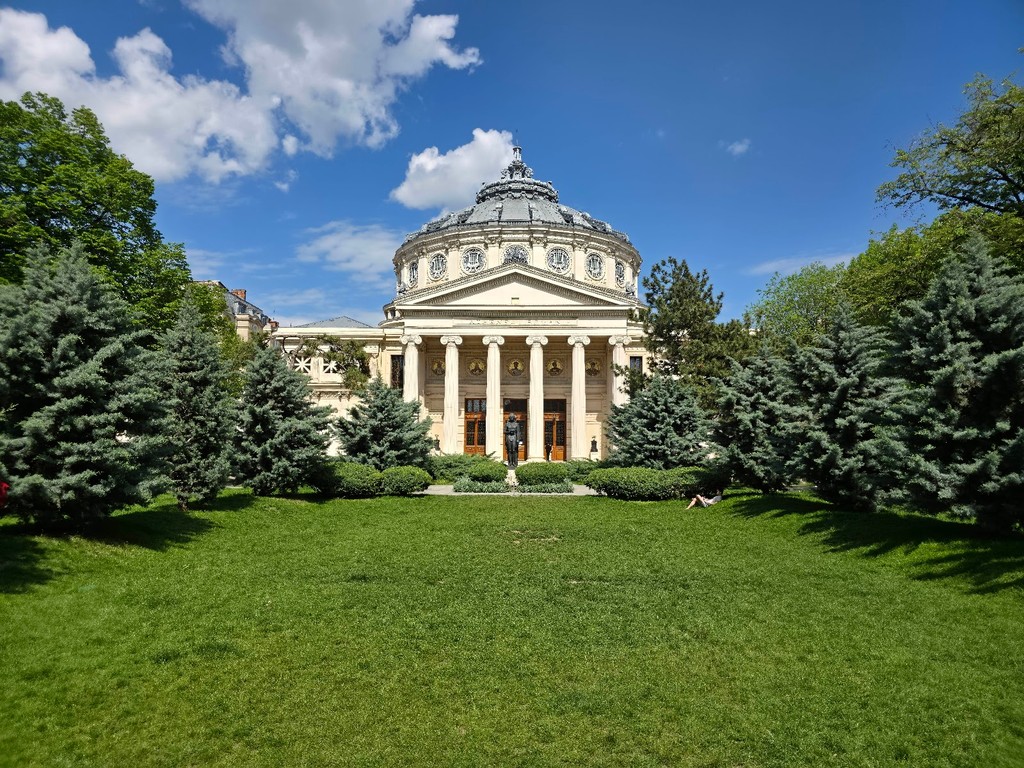
Romanian Athenaeum (Source: Google Maps)
The Romanian Athenaeum is a stunning concert hall located in the heart of Bucharest, renowned for its exceptional architecture and cultural significance. Completed in 1888, the building is an architectural masterpiece, featuring a grand dome and a façade adorned with Corinthian columns and intricate sculptures. It serves as the home of the George Enescu Philharmonic Orchestra and is a symbol of Romanian culture and national identity. The interior is equally impressive, with a lavish auditorium that boasts excellent acoustics, making it a favorite venue for classical music performances. The Athenaeum is also notable for its rich history, having hosted numerous prominent figures in the arts and politics. Visitors can enjoy guided tours of the building, learn about its history, and attend concerts, making it a cultural highlight in Bucharest.
Revolution Square
Visit Revolution Square, a historic site where many significant events in Romanian history took place, including the 1989 revolution.
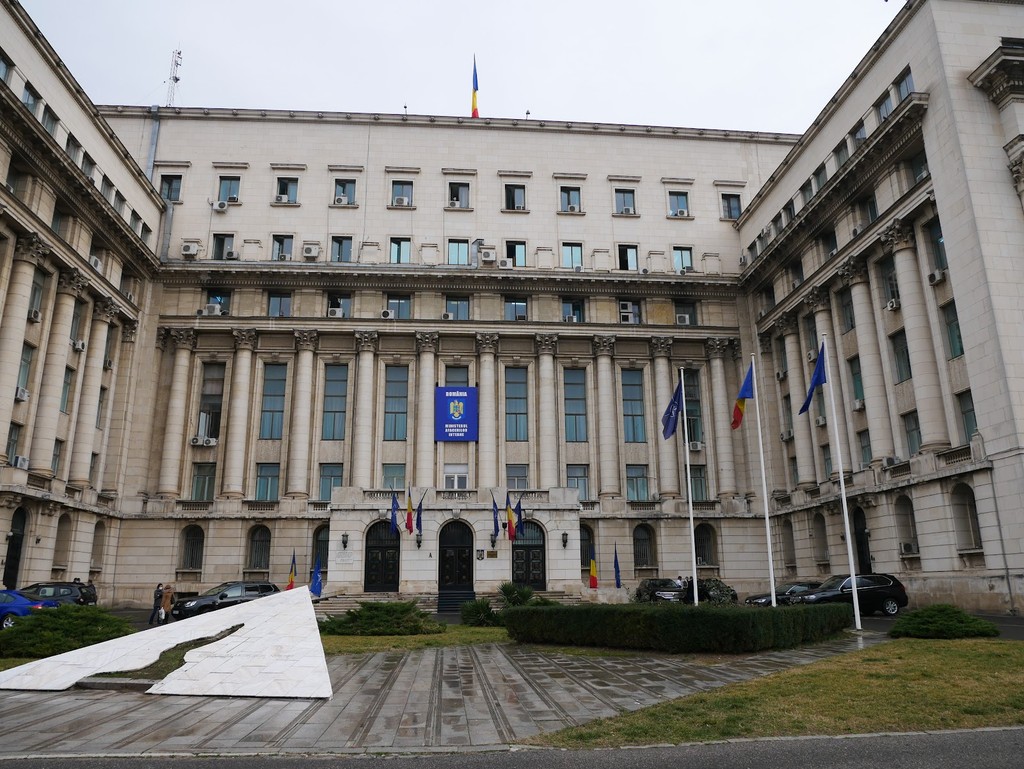
Revolution Square (Source: Google Maps)
Revolution Square, known as Piața Revoluției, is a historic site in Bucharest that played a pivotal role in Romania's struggle for freedom and democracy. The square is most famous for the events of December 1989, when protests against the communist regime culminated in a revolution that led to the fall of Nicolae Ceaușescu. The square is surrounded by significant landmarks, including the former Central Committee of the Communist Party and the National Museum of Art. A prominent monument commemorating the revolution stands in the square, along with a memorial to the victims of the 1989 uprising. Today, Revolution Square serves as a gathering place for cultural events, concerts, and public demonstrations, symbolizing the resilience of the Romanian people and their ongoing journey toward democracy.
Old Town (Lipscani)
Wander through the vibrant streets of Bucharest's Old Town, filled with charming cobblestone alleys, historic buildings, and lively cafes.
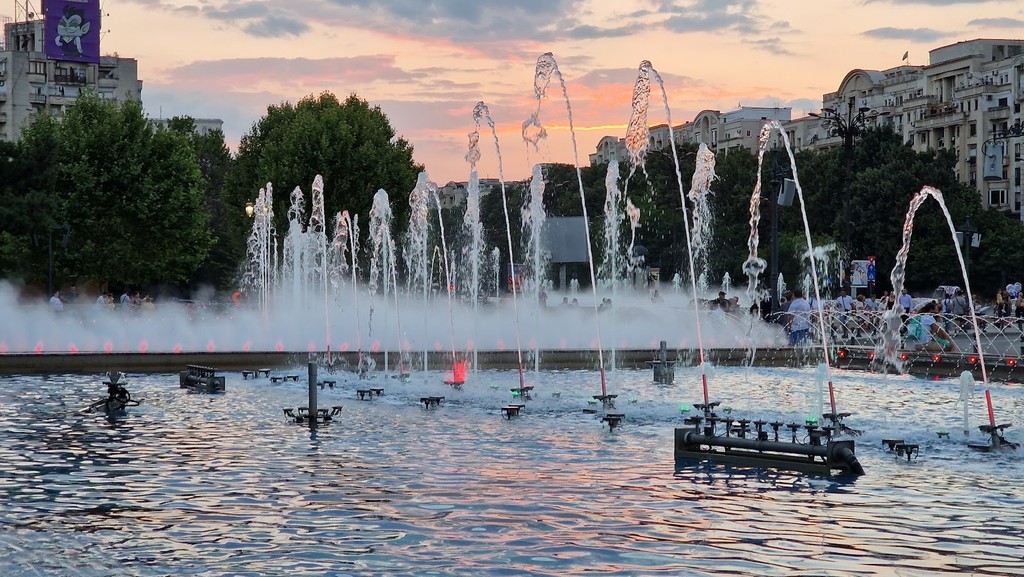
Old Town (Lipscani) (Source: Google Maps)
Old Town, known as Lipscani, is the historic heart of Bucharest, characterized by its charming cobblestone streets, vibrant atmosphere, and rich architectural heritage. This area dates back to the 15th century and has been a center of commerce and culture for centuries. Visitors can explore a mix of medieval buildings, neoclassical structures, and modern establishments, creating a unique blend of old and new. The Old Town is home to numerous cafes, restaurants, and shops, making it a lively hub for both locals and tourists. Key landmarks in the area include the Stavropoleos Monastery, famous for its intricate façade and peaceful courtyard, and the National Bank of Romania, showcasing stunning architecture. The area is known for its nightlife, with bustling bars and clubs, making it a popular destination for those seeking entertainment. Old Town is a must-visit for anyone looking to experience the vibrant spirit of Bucharest.
Stavropoleos Monastery
Visit the Stavropoleos Monastery, a small but beautifully decorated church known for its unique Brâncovenesc architectural style.
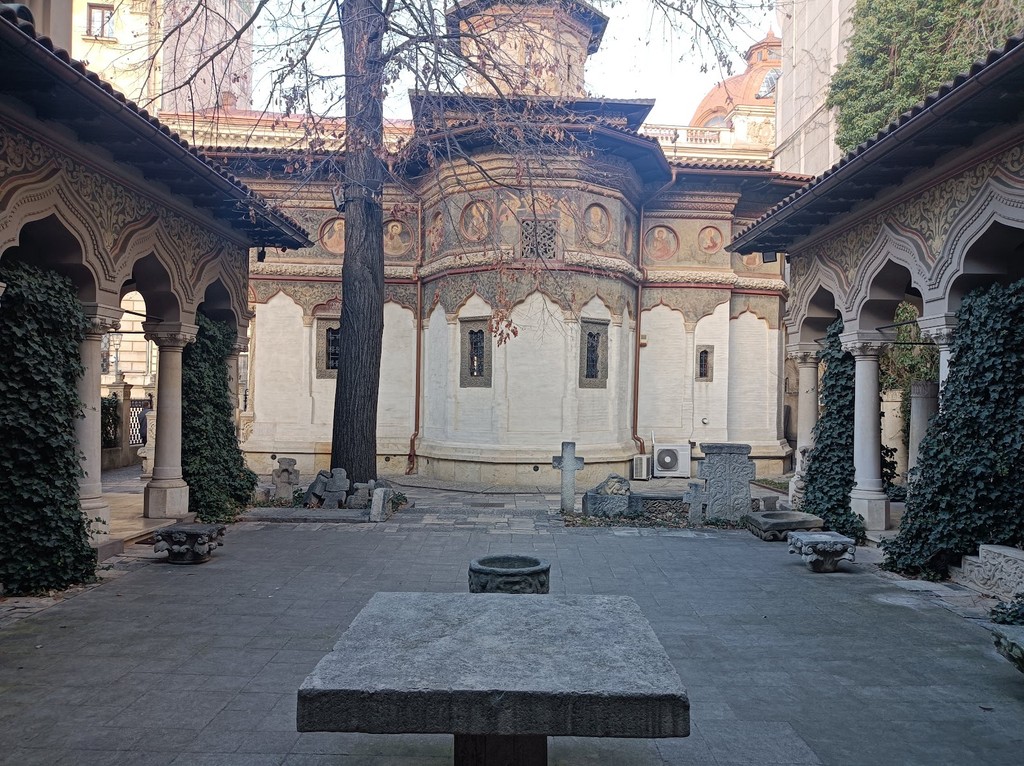
Stavropoleos Monastery (Source: Google Maps)
Stavropoleos Monastery, a hidden gem in the heart of Bucharest, is renowned for its exquisite Brâncovenesc architecture, which combines Byzantine and Romanian styles. Founded in 1724 by Greek monk Ioanichie, the monastery features a stunning church adorned with intricate wood carvings and beautiful frescoes that reflect the artistry of the time. The peaceful courtyard, surrounded by high walls, offers a serene escape from the bustling city. The monastery has a rich history, having served as a spiritual center for the local community and a place of refuge during tumultuous times. Today, it remains an active place of worship and is open to visitors who wish to admire its architectural beauty and learn about its history. The monastery is also home to a small museum showcasing religious artifacts, making it a significant cultural site in Bucharest.
National History Museum of Romania
Conclude your tour at the National History Museum, where you can explore Romania's rich history through diverse exhibits and artifacts.
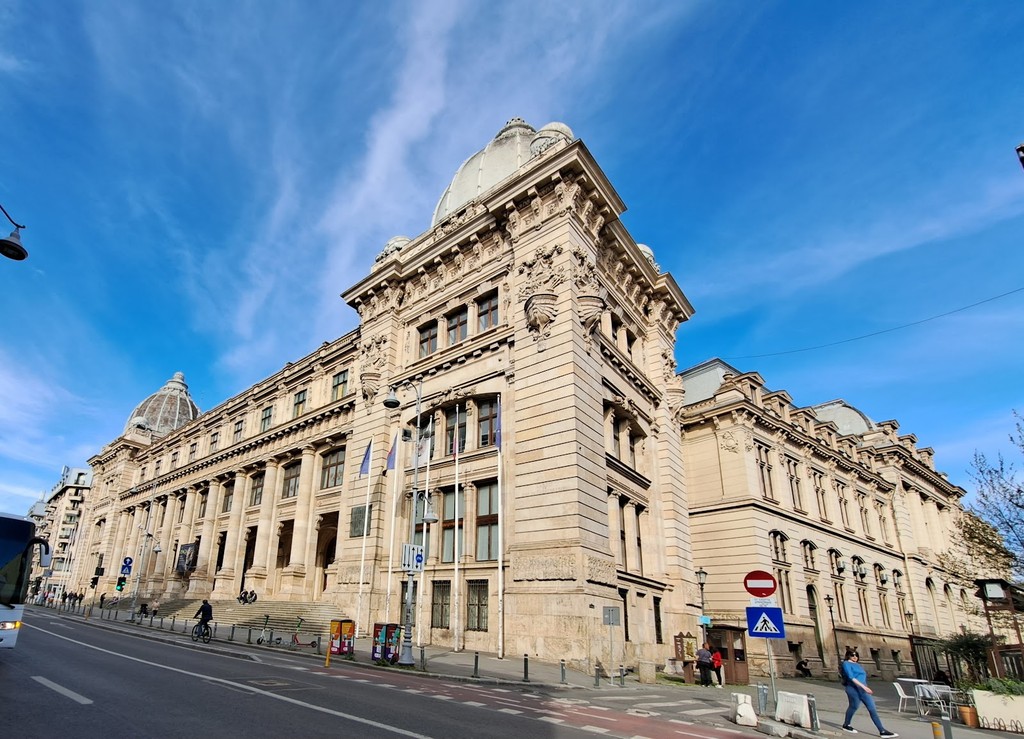
National History Museum of Romania (Source: Google Maps)
The National History Museum of Romania is a key institution for understanding the country's rich and diverse history. Located in a grand neoclassical building, the museum offers a comprehensive collection of artifacts that span Romania's history from prehistoric times to the present. Exhibits include a vast array of archaeological finds, historical documents, and cultural artifacts, showcasing the evolution of Romanian society. Highlights of the museum include the Romanian Crown Jewels, which are a symbol of national pride, and the famous Trajan's Column replica, which commemorates the Roman conquest of Dacia. The museum also features temporary exhibitions that explore various aspects of Romanian history and culture. It serves as an educational resource for visitors of all ages, making it a significant stop on any tour of Bucharest.

Your travels, your rules.
Create your own Free Walking Tours.
Set your preferences, distances and anything you want to do or see.
Completely free, no payment required.